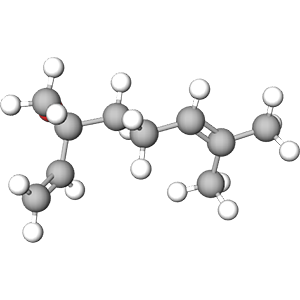

Linalool is a naturally occurring terpene alcohol found in many flowers and spice plants, including lavender, bergamot, and coriander amoung many others. It is known for its pleasant floral scent with a slight hint of spiciness, making it a staple in the creation of floral and citrus fragrances. Linalool is utilized not only for its aromatic qualities but also for its ability to blend well with other fragrance notes, enhancing the overall bouquet of the perfume. Its calming and soothing properties are appreciated in aromatherapy.
Employed extensively in floral and citrus fragrances, personal care products, and aromatherapy products for its sweet, floral aroma. It enhances the complexity and appeal of fragrance blends.
IUPAC Name: 3,7-dimethylocta-1,6-dien-3-olCAS Number: 78-70-6
Molecular Formula: C10H18O
Molecular Weight: 154.25 g/mol
Boiling Point: 388.4 °F (198.00 °C)
Melting Point: < 77.0 °F (< 25.00 °C)
Class: Alcohol
Use/s: Scent
Synonyms
1: Linalool 2: 3,7-Dimethylocta-1,6-dien-3-ol 3: Linalol 4: LINALYL ALCOHOL
Chemist Says
Liquid, Other Solid; Other Solid; Liquid
Scent: Bergamot, Lavender, Floral
Scent profile
Scent profiles are inherently subjective and can significantly differ among individuals, and may also be influenced by the conditions at the time of evaluation. The information provided here is a synthesis of data from diverse sources, including books, cross-references, artificial intelligence analyses, and chemical research sites, aiming to present a comprehensive overview. We've distilled this information to highlight the most frequently observed scent profiles for each molecule or compound, offering a generalized perspective.
1: Floral, Citrus, Slightly Spicy
2: Floral, Lavender, Slightly Spicy, Wood
3: Floral, Herbal Woody, Rosewood
4: Odor similar to that of bergamot oil and French lavender
 Irritant
Irritant